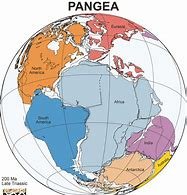The following interview by Cliff Dunning (www.earthancients.com) and Mary Sutherland (www.burlingtonnews.net) shares fascinating insights. Mary and some of her associates have directly witnessed large, constructed pyramids (one stone, and one of black obsidian) submerged under the water of Rock Lake, Wisconsin. She also said she met a Ranger at the site, who showed her a map of the lake area with 1,100 ancient structures, including standing stone circles. Of course, she was unable to obtain a copy of that map, but she did sight it herself. Mary and her associates personally scuba-dived Rock Lake, so she is hands-on in her approach to research. She has been researching the lake and its submerged contents for the last 6 years. She says the area covered by the lake today was once dry ground, and was the site where ancient people lived in a bowl-like area fed by a fresh water stream or river. She postulates that at the time the pyramids under the lake were constructed, the tectonic plates and land masses of the earth looked very different to today, and that it was the old Pangaea continent, which subsequently broke up into separated land masses after earth cataclysms. (She states that the New York coastline abutted up to the western coast of Morocco in those times). She is also the author of a book about red-haired giants on the North American continent.
The interview was aired on 14th April 2018, and is 57.31 minutes long.
Nobody knows exactly how Pangaea appeared, but here is a version on a globe for reference.

(I think the Earth must have been balanced by two large landmasses on opposite sides of the world (perhaps, Gondwana?) or the Earth orbit may have been unbalanced. Mary Sutherland states that the ancient country known as Atzlan will be found in the Nova Scotia area (but she distinguishes this from Plato's version of Atlantis).
You have to use discernment (as ever) on Mary's website, as there appear to be many statements from various sources, for example discussing Helena P. Blavatsky. I found the section giving further detail on red-haired giants interesting. She has information under the headings of: Giants of... Alaska, Arizona, Arkansas, California, Colorado, Florida, Illinois, Indiana, Iowa and Kentucky. I think the subjects where she has done her own independent research (including Wisconsin and Kentucky) are her best work.
The interview was aired on 14th April 2018, and is 57.31 minutes long.
Nobody knows exactly how Pangaea appeared, but here is a version on a globe for reference.

(I think the Earth must have been balanced by two large landmasses on opposite sides of the world (perhaps, Gondwana?) or the Earth orbit may have been unbalanced. Mary Sutherland states that the ancient country known as Atzlan will be found in the Nova Scotia area (but she distinguishes this from Plato's version of Atlantis).
You have to use discernment (as ever) on Mary's website, as there appear to be many statements from various sources, for example discussing Helena P. Blavatsky. I found the section giving further detail on red-haired giants interesting. She has information under the headings of: Giants of... Alaska, Arizona, Arkansas, California, Colorado, Florida, Illinois, Indiana, Iowa and Kentucky. I think the subjects where she has done her own independent research (including Wisconsin and Kentucky) are her best work.


